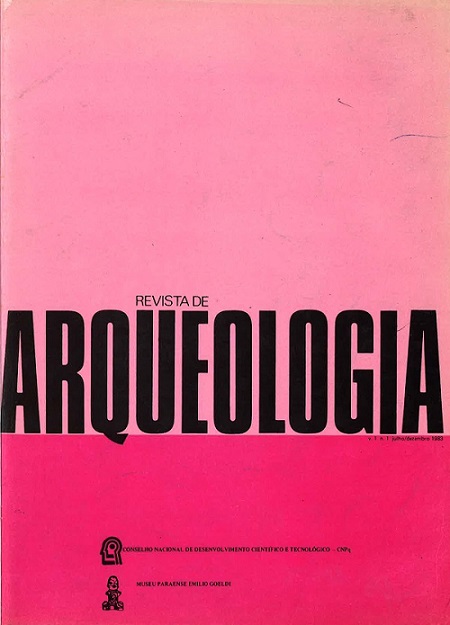Projections of Ge social structure in the rock art of northern Minas Gerais, Brazil
Any hypotesis
DOI:
https://doi.org/10.24885/sab.v1i1.26Resumo
O Grupo Gê, composto por diferentes tribos que vivern no sul e centro do interior do Brasil, é famoso na Literatura Antropológica por suas ideologias tendo, contudo, uma estrutura econômica e tecnológica simples baseada na caça, coleta e horticultura Observa-se: as formas circulares concêntricas, na divisão do espaço territorial, obedecendo uma seqüência de significado social e de atividades cerimoniais e também, a variedade de desenhos geométricos na ornamentação dos corpos, utensílios etc., que são associados à hierarquia social, idade, ritos cerimoniais etc. Arqueólogos e etnológos têm a possibilidade de comparar tais desenhos e pinturas atuais com desenhos e pinturas rupestres pré-históricos, facilitando uma anålise e interpretação mais acurada desses.
Downloads
Referências
ALBISETTI, Cesar & VENTURELLI, Angelo Jayme. Enciclopédia Bororó l, vocabulários e etnografia. Campo Grande, MT, Museu Regional Dom Bosco, 1962.
CROCKER, J. Christopher. Why are the Bororó matrilineal? In: Actes du XLII Congres International des Americanistes, 2. Paris, 1977. p. 245-58.
DA MATA, Roberto. Um mundo dividido: a estrutura social dos índios Apinayé. Petrópolis, Vozes, 1976.
HENRY, Jules. Jungle people: a Kaingang tribe of the highlands of Brazil. New York, Random House, 1941.
LAVE, J. C. Social Taxonomy among the Krikati (Gê) of central Brazil. PhD dissertation. Harvard University, Department of Anthropology, 1967.
LEVI-STRAUSS, Claude. A world on the wane. London, Hutchinson, 1961.
MAYBURY-LEWIS, David. Akwe-shavante society. Oxford University Press, 1967.
The savage and the innocent. New York, World Publishing, 1965.
NIMUENDAJU, Curt. The Apinayé. Washington, Catholic University of America, 1939. (Anthropological Series, 8).
The dual organization of the Ramkokamekra (Canella) of northern Brazil. American Anthropologist; 39:565-82, 1937.
The eastern Timbira. American Archeology and Ethnology, Berkeley, University of California, 41, 1946.
The serent: publication of the Frederick Webb. Los Angeles, Southwest Museum, 1942. (Hodge Anniversary Series, 4).
The social structure of the Ramkokamekra (Canella). American Anthropologist, 40:51-74, 1938.
REICHEL-DOLMATOFF, Gerardo. Amazonian cosmos. University of Chicago Press, 1971.
Rock paintings of the Vaupés: an essay of interpretation. Folklore Americas, Los Angeles, 1967.
SEEGER, Anthony. Fixed points on arcs in circles: the temporal, processual aspect of Suyá space and society. In: Actes du XLI/ Congress International des Americanistes, 2. Paris, 1977. p.341-59.
Nature and culture and their transformations in the cosmology and social organization of the Suvá, a Gê-speaking tribe of central Brazil. PhD dissertation. University of Chicago, Dept. of Anthropology, 1974.
TURNER, Joan Bamberger. Environment and cultural classification: a study of the Northern Kayapó. PhD dissertation. Harvard University, Dept. of Anthropology, 1967.
TURNER, Terence S. Social structure and political organization among the Northern Kayapó. PhD dissertation Harvard University, Dept. of Anthropology, 1966.
Downloads
Publicado
Como Citar
Edição
Seção
Licença
Copyright (c) 2021 Ruth Gruhn

Este trabalho está licenciado sob uma licença Creative Commons Attribution-NonCommercial-ShareAlike 4.0 International License.





